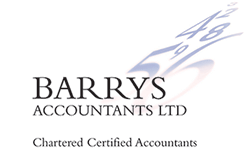Business rates reform - where are we now?
You need to delve into the small print of the Autumn Budget to find details of changes to the business rates. You’ll find that instead of the promised help for high-street businesses many will face higher charges in April 2025. What’s the full story?

Business rate reform
Successive governments, including the current one, have promised business rates reform to help level the playing field for high-street businesses in their competition with online sellers. In practice they’ve used sticking-plaster policy to fudge fundamental changes. But is change finally on the way?
Calculating rates - as you were (almost)
It seems change might finally be on the way but not for the 2025/26 financial year. As you’re probably aware, business rates are worked out by applying a multiplier to the rateable value for each business premises.
The multiplier is set by central government while the rateable value is set by local authorities. A lower multiplier is used for properties with a rateable value below £51,000. For 2025/26 local authorities across the country will use 2021 valuations.
Relief for the smallest
Small business rates relief means that a property with a rateable value up to £12,000 has no business rates at all, and there is a sliding scale for rateable values up to £15,000.
For example, if the rateable value is £13,500, i.e. halfway between £12,000 and £15,000, the initial result of applying the multiplier of £49.9p (£6,736) is reduced by 50% to £3,368. The system’s cliff edges of £15,000 and £51,000 create a dramatic increase in costs.
Visit the business rates section of your local authority’s website to find out the procedure for claiming the relief.
Retail rate relief scheme
Currently, retail, hospitality and leisure properties that aren’t fully covered by small business rates relief qualify for a 75% discount capped at £110,000. From April 2025, this discount will only be 40%, which will hit these particular businesses hard. For example, if a shop has a rateable value of £40,000, the multiplier of 49.9p results in an initial rates bill of £19,960. The 40% discount is then applied to give £11,976 for 2025/26 (which compares with a rates bill of only £4,990 in 2024/25). The good news is that from April 2026, permanently lower business rates multipliers will apply to retail, hospitality and leisure properties. The relief cap is per business or group of connected businesses, not per property.
Into the future
Consultation is ongoing on how to help some businesses and clamp down on others that use questionable avoidance tactics. Proposals include
- a duty to notify changes to use of property is delayed at least until 1 April 2026 with mandatory reporting not required until 1 April 2029
- digitisation and data sharing between HMRC and councils will start in March 2028
- property revaluations will take place annually
- a general anti-avoidance rule and action to tackle perceived misuse of empty property relief
- a higher multiplier will apply from 2026 to properties with a rateable value of £500,000 or more. This is an attack primarily on online retailers with cavernous warehouses.
Related Topics
-
New disclosure facility for R&D claims launches
A new disclosure facility for companies to rectify inaccurate, historic R&D claims, has been launched. Who might be affected, and how should you use it if you need to?
-
VAT on barter and non-monetary payments
Your business sometimes sells goods and services to customers in exchange for their goods and services rather than money, i.e. a barter arrangement. How do you account for VAT on these deals?
-
HMRC chief urges thousands to check NI record
In a recent statement HMRC’s chief executive has flagged a problem affecting the NI records of tens of thousands of taxpayers. The trouble concerns anyone entitled to child benefit between 1978 and 2000. What steps are needed to correct the problem?



 This website uses both its own and third-party cookies to analyze our services and navigation on our website in order to improve its contents (analytical purposes: measure visits and sources of web traffic). The legal basis is the consent of the user, except in the case of basic cookies, which are essential to navigate this website.
This website uses both its own and third-party cookies to analyze our services and navigation on our website in order to improve its contents (analytical purposes: measure visits and sources of web traffic). The legal basis is the consent of the user, except in the case of basic cookies, which are essential to navigate this website.